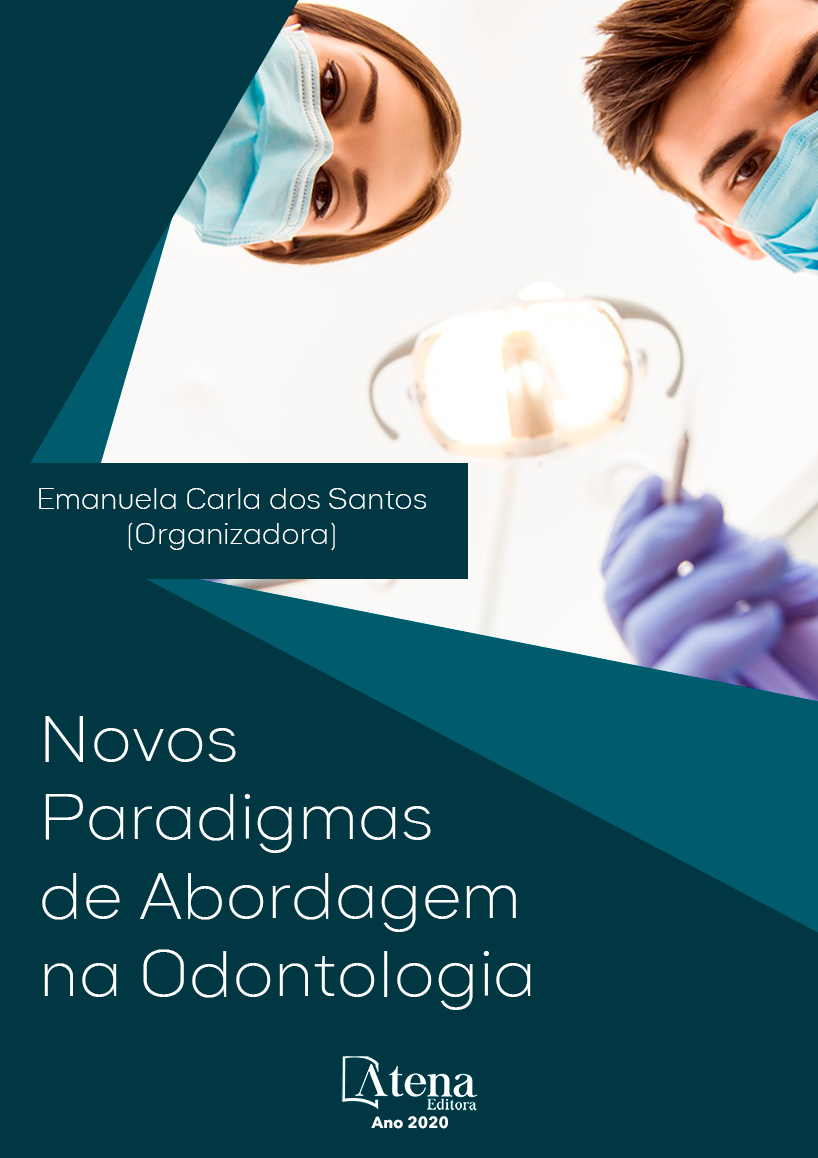
AVALIAÇÃO DA CIMENTAÇÃO PROVISÓRIA EM COROAS IMPLANTOSUPORTADAS E DA DISCREPÂNCIA VERTICAL DA LINHA DE CIMENTO.
O estudo in vitro teve como objetivo avaliar 3 tipos de cimentos provisórios e a linha de cimentação entre o coping metálico sobre o componente protético antes e após simulação de fadiga mecânica. Foram utilizados 30 implantes de 9 x 3,75 mm, sendo 10 de cada tipo de conexão (Cone Morse, Hexágono Externo, Hexágono Interno). Os implantes receberam pilares do tipo munhão universal que foram torqueados com torquimetro digital segundo recomendação do fabricante. Posteriormente a aplicação do torque, os copings metálicos foram cimentados sobre os pilares protéticos. Foram utilizados 3 tipos de cimentos: cimento Óxido de Zinco sem Eugeno (Relyx - 3M,ESPE), cimento de Hidróxido de Cálcio (HydroC, Dentsplay) e cimento de Óxido Zinco e Eugenol (Provy, Destsplay), onde todos os tipos de conexões receberam os 3 tipos de cimento, sendo divididos em grupos: GR, GHC, GP e foram submetidos a avaliação estereomicroscópica visando mensurar a adaptação do cooping metálico sobre o pilar protético, após, foram submetidos a ciclagem mecânica, com aplicação de uma carga de 120N, 75 ciclos/s por 1.000.000 ciclos a 1 Hz, submersos em água destilada, e em seguida foram novamente submetidos a avaliação estereomicroscópica. Foi utilizado o teste de ANOVA (p<0,05) seguido de teste de tukey para um critério de avaliação, houve diferença estatisticamente significante entre a avaliação da linha de cimentação antes e após a ciclagem mecânica aonde a linha de cimentação diminuiu após a fadiga mecânica (p<0,01), para avaliar a linha de cimento entre grupos observou-se que no grupo GR e GHC apresentou uma redução da linha de cimentação após a ciclagem mecânica (p<0,01 e p< 0,05), no grupo GP a redução da linha de cimentação após fadiga mecânica não foi significativa, porém apresentou menor discrepância vertical na linha de cimentação. Conclui-se que o tipo de cimento interfere na eficácia da cimentação de coroas sobre implante, e a linha de cimento sofre redução após carga mastigatória, independente do cimento utilizado.
AVALIAÇÃO DA CIMENTAÇÃO PROVISÓRIA EM COROAS IMPLANTOSUPORTADAS E DA DISCREPÂNCIA VERTICAL DA LINHA DE CIMENTO.
-
DOI: 10.22533/at.ed.8502002041
-
Palavras-chave: Implantação dentária, Cimentação, Retenção, Junções Gap, Mastigação.
-
Keywords: dental implants, prosthesis fixed by implants, prosthesis fit, Gap Junctions, Retention. Chewing.
-
Abstract:
Objective: The purpose of this in vitro study was to evaluate the effectiveness of 3 types of cement and the cementation line between the metallic coping on the prosthetic component before and after mechanical fatigue simulation. Materials and methods: 30 implants of 9 x 3.75 mm were used, 10 of each type of connection (Morse Cone, External Hexagon, Internal Hexagon). The implants were individually inserted in acrylic resin. The torque on the universal trunnion bolts was made with digital torque wrench according to the manufacturer's recommendation. After the application of the torque, the metallic copings were cemented on the prosthetic abutments. Three types of cement were used: zinc oxide cement without Eugene (Relyx - 3M, ESPE), calcium hydroxide cement (HydroC, Dentsplay) and oxide and zinc cement and Eugenol (Provy, Destsplay), where all types of cement The three types of cement were divided into 3 groups GR, GHC, GP and were submitted to a stereomicroscopic evaluation to measure the effectiveness of cementation between the different cements and the adaptation of the metallic cooping on the prosthetic abutment, after which they were submitted to mechanical cycling with application of a load of 120N, 75 cycles / s per 1,000,000 cycles at 1 Hz, submerged in distilled water, and then again subjected to stereomicroscopic evaluation. Results: The ANOVA test (p <0.05) followed by tukey test for an evaluation criterion showed that there was a statistically significant difference between the evaluation of the cement line before and after the mechanical cycling where the cementation line decreased after (Relyx - 3M, ESPE), calcium hydroxide cement (HydroC, Dentsplay) and cement of (P <0.05) and it was observed that in the GR and GHC group, a reduction of the cementation line was observed after mechanical cycling (p <0, 01 and p <0.05), in the GP group the reduction of the cementation line after mechanical fatigue was not significant, but it was the one that presented the smallest vertical discrepancy in the cementation line, already in the evaluation of effectiveness between the cements showed that GR obtained 100 %, GHC 80% and GP 50% retention of the coping on the abutment after cycling. Conclusion: The cement type interferes with the effectiveness of crown cementation on the implant, and the cement line undergoes alteration after masticatory load, regardless of the cement used, a reduction of this cement line after fatigue.
-
Número de páginas: 19
- Rafael Almeida Rocha
- Celi Cecília Amarante Almeida Rocha
- Carla de Souza Oliveira
- Elissa Almeida Rocha


